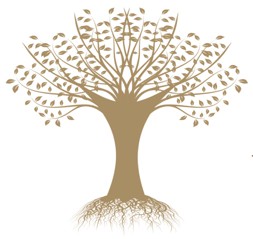By Nadia Marshall
What is saffron?
Saffron is perhaps the most revered of all the exotic spices and throughout history has been exalted for its perfume, colour (as a dye) and medicinal properties. This is not surprising given that each flower produces only three stamens that must be lovingly hand picked and carefully dried, taking about 160 flowers to produce just 1gm of saffron!
What are its qualities?
From an Ayurvedic perspective, saffron has the following qualities...
Rasa: Pungent, Bitter
Virya: Heating
Vipaka: Pungent
Qualities: Light, unctuous
Actions on the doshas: Balance Vata, Pitta & Kapha
Action on the mind: Sattvic
What are its medicinal qualities?
Ayurveda teaches that saffron has both invigorating and nourishing qualities and bestows its strongest medicinal actions on the blood, the heart and the reproductive system. This strong affinity for the blood makes it useful in anaemia (it raises haemoglobin levels), conditions of impaired circulation such as angina and cardiac congestion as well as helping to bring on delayed menstruation and aiding painful or difficult menses (dysmenorrhoea). The subtle nourishing effect of Saffron feeds the deep nervous and reproductive tissues, which makes it especially useful for debility, degenerative disease, low libido and impotence. Strengthening the effect of any other substance it is taken with, Saffron is also one of the most Sattvic spices. This Sattvic quality along with its affinity for the heart helps in the development of compassion and love and at the same time counters depression and deficiency.
The Western viewpoint.
The western viewpoint lines up pretty well with the Ayurvedic teachings. Clinical studies have shown that saffron may be very useful for depression. In fact, the Beyond Blue brochure says that taking 4 strands of saffron a day might be as effective as taking a low-dose prescription antidepressants. Other clinical studies have shown saffron significantly improves symptoms of PMS after two menstrual cycles and also reduces pain severity and duration during the menstrual cycle. When it comes to debilitating disease, research has shown saffron might improve the symptoms of Alzheimer’s!
How do you eat it?
Due to its rarity, Saffron is more expensive than platinum so thankfully only a small amount is necessary to have a therapeutic effect. 1-5 strands per day is enough to impart its benefits and it is best taken after soaking in warm milk. Be careful not to boil Saffron as it contains precious volatile oils that will be lost. I like to add it to warm puddings at the end of the cooking process, to porridges after soaking in warm milk... or to warm milks before bed!
Why do I love it?
I love the delicate, subtle taste and colour of saffron... and because it is so rare and expensive, I quite like how decadent it feels to use it in cooking. You really savour each mouthful or saffron, knowing its remarkable medicinal qualities.
Should anyone avoid eating it?
Please avoid using saffron if you are pregnant or breastfeeding as it stimulates the flow of blood in the uterus. Also, it is important to not take super high doses of saffron generally...just 1-5 strands a day is sufficient. People who are allergic to Lolium, Olea (includes olive), and Salsola plant species may also be allergic to saffron.
Where do you get it from?
You can get saffron from Asian grocers and possibly also from wholefood stores.
Enjoy xxx
Love
Nadia x
References:
“Ayurvedic Cooking for Self-Healing” by Vasant Lad
“Ayurvedic Medicine” by Sebastian Pole http://www.webmd.com/vitamins-supplements/ingredientmono-844-SAFFRON.aspx?activeIngredientId=844&activeIngredientName=SAFFRON

Saffron: The Ayurvedic Perspective
AYURVEDIC TERMINOLOGY
Agni - the digestive fire.
Ama or Aama - undigested food waste, toxins.
Ojas- the foundation of our immune system and longevity.
Dhatus - the tissues of the body.
Srotas - the channels of the body.
Vata - the air/ether
intelligence in the body.
Pitta- the fire/water
intelligence in the body.
Kapha- the water/earth intelligence in the body.
Sattva- the quality of purity, intelligence, peace and love.
Rajas- the quality of
turbulence and activity.
Tamas- the quality of
dullness, darkness and inertia.
Rasa - the taste of a food (Sweet, Sour, Salty, Pungent, Bitter, Astringent)
Virya - second level of digestion (either Heating or Cooling)
Vipaka - third level of digestion, the deep taste of a food (can be Sweet, Sour or Pungent)
Prabhav - the 'special effect' of a food or herb/spice
Rasa - also the name for plasma tissue
Rakta - blood tissue
Mamsa - muscle tissue
Meda - fat tissue
Asthi - bone tissue
Majja - nerve & bone marrow tissue
Shukra - sexual reproductive tissue


